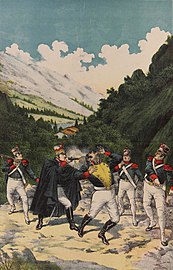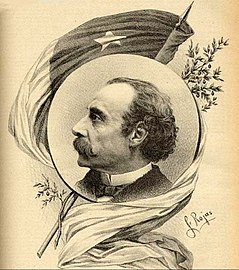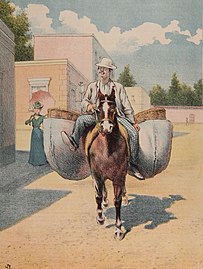
The Chilean War of Independence was a military and political event that allowed the emancipation of Chile from the Spanish Monarchy, ending the colonial period and initiating the formation of an independent republic.

Manuel Rojas Sepúlveda was a Chilean writer and journalist.

Friar José Camilo Henríquez González was a priest, author, politician, and is considered an intellectual antecedent to and founding father of the Republic of Chile for his passionate leadership and influential writings. He was also one of the most important early South American newspaper writers and wrote several essays, most notably the Proclama de Quirino Lemachez, which promoted Chilean independence and liberty. He also wrote under the pseudonym Quirino Lemachez.
Lorenzo Domínguez was a prolific Latin American sculptor whose art is a deliberate and personal synthesis of pre-Columbian and Rapa Nui aesthetics with a European artistic formation.

Chilean literature refers to all written or literary work produced in Chile or by Chilean writers. The literature of Chile is usually written in Spanish. Chile has a rich literary tradition and has been home to two Nobel prize winners, the poets Gabriela Mistral and Pablo Neruda. It has also seen three winners of the Miguel de Cervantes Prize, considered one of the most important Spanish language literature prizes: the novelist, journalist and diplomat Jorge Edwards (1998), and the poets Gonzalo Rojas (2003) and Nicanor Parra (2011).
The National Exhibition of Fine Arts was a regular event that took place in Spain from 1856 to 1968; usually in Madrid. These exhibitions were in the form of a competition, established by a Royal Decree from Queen Isabella II in 1853. It was the largest official exhibition of Spanish art.
The Grand Lodge of Chile is a regular Masonic body in Chile founded on May 24, 1862. The earthquake of 1906 destroyed the original headquarters and the archives of the Grand Lodge, which determined its definitive transfer to Santiago, settling in the Club de la República.

Manuel Antonio Caro Olavarría was a Chilean painter and is classed among Chile's best-loved artists. The son of Victorino Caro y Cárcamo and Asunción de Olavarría y Sierpe, he was named Caro Olavarría. The first Chilean student to attend the École des Beaux-Arts in Paris, Caro's body of work included portraits and scenes of everyday life, and earned him high honors and international recognition.

Chilean art refers to all kinds of visual art developed in Chile, or by Chileans, from the arrival of the Spanish conquerors to the modern day. It also includes the native pre-Columbian pictorial expression on modern Chilean territory.

Alberto Valenzuela Llanos, was one of Chile's greatest painters and one of the four Great Chilean Masters, along with Pedro Lira, Alfredo Valenzuela Puelma and Juan Francisco González. He was a landscape painter and left an estimated 1,000 paintings. Highlights of his work include paintings of the snow-topped mountains in France and views of Paris.

The Royal University of San Felipe was a university created by King Philip V in 1738, in territory which was then part of the Kingdom of Spain. It was officially founded in Santiago in 1747 and began teaching activities in 1758. It is the immediate predecessor of the University of Chile (1843).
The Convictorio Carolino was a school which operated in Santiago in colonial Chile. Some of the most important figures in the Chilean War of Independence were educated there.

Isidora Aguirre Tupper was a Chilean writer, an author mainly of dramatic works on social issues that have been performed in many countries in the Americas and Europe. Her best known work is La pérgola de las flores, which, constituted "one of the milestones in the history of Chilean theater in the second half of the 20th century."

Nelson Omar Brodt Chávez is a Chilean actor, director, dramatist, and teacher, with an extensive career in theater, film, and television.

Álvaro Casanova Zenteno was a prominent marine painter and of historic naval warfare, a statesman his art is classified as realist, expressionist, classical, and romantic.
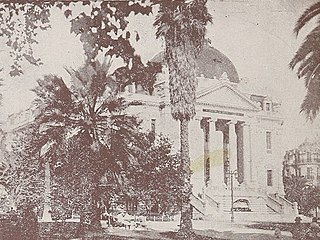
Academy of Painting, also known as the School of Fine Arts of Santiago, was a Chilean art school, founded on March 17, 1849 in Santiago, Chile. The school produced many works for the Chilean National Museum of Fine Arts, where it once was located. In 1932, it merged with and is now known as the Department of Visual Arts within the Arts Faculty, University of Chile.
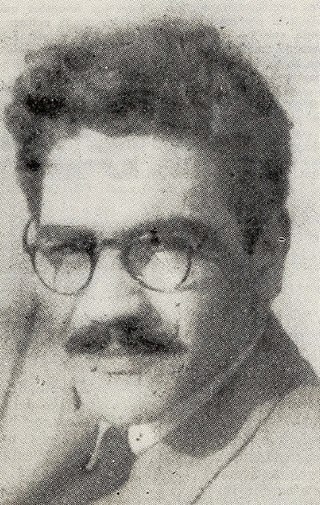
José Venturelli Eade was a Chilean painter, engraver and illustrator, best known for his work as a muralist.
Raúl Mariano Pino Terán was a Chilean football manager who worked in Chile and Bolivia.

